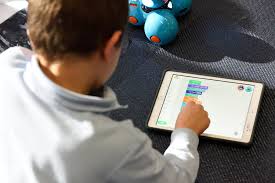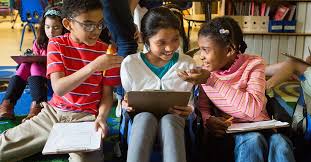What are ESL games?
Increase student engagement and satisfaction through these 10 ESL games and activities.
- Board Race.
- Call My Bluff / Two Truths and A Lie.
- Simon Says.
- Word Jumble Race.
- Hangman.
- Pictionary.
- The Mime.
- Hot Seat.
How do you make ESL lessons fun?
Here’s how to make learning English fun for your students:
- Get to know your student. Set a target or a goal.
- Make the lesson interactive by using props and telling stories.
- Be mindful of body language and play with the tone of your voice.
- Reward the student and play games.
- Don’t take it so seriously. Have fun!
What to teach to ESL beginners kids?
30 ESL Topics For Kids
- Alphabet and phonics.
- Greetings and Introductions (Hello / Goodbye / What’s your name?)
- Feelings and Emotions (How are you?)
- Weather (How’s the weather? / What’s the weather like?)
- Colors (What color is it?)
- Numbers (How many? / How Much is it?)
- Shapes.
- Adjectives (It’s big / small.)
How do I gamify my ESL classroom?
Here’s How You Can Gamify Your ESL Classroom Efficiently
- Choose a Goal. What do you want your students to accomplish?
- Divide It into Milestones.
- Design Your Game Board.
- Create Avatars.
- Create Badges.
- Design a Leaderboard.
- Consider Playing in Teams.
What are ESL games? – Additional Questions
What are gamification activities?
Gamification is the integration of game elements like point systems, leaderboards, badges, or other elements related to games into “conventional” learning activities in order to increase engagement and motivation.
What are the best examples of gamification in the classroom?
A few examples of gamification include: Earning virtual “points” for completing tasks. Playing educational games to learn academic skills. Competing with peers on a leaderboard towards a goal.
How do you gamify a classroom?
Six steps to a gamified classroom
- Identify what should be gamified. Gamification is all about motivation and engagement, so focus on areas in your classroom where those elements are lacking.
- Know your students.
- Set the rules.
- Keep it flexible.
- Extend it beyond one subject.
- Track your own progress.
What is educational gamification?
Gamification in education means that educators apply game design elements to an educational setting. The goal is usually to make learning more engaging. Breaking the concept of a “game” down into constituent game design elements is tricky, considering how vast the differences are among, say, chess, The Sims, and tag.
Why is AFL important?
AFL helps create a sense of self-efficacy (a learner’s confidence in their ability to reach targets through hard work and determination). This is an essential quality for learners to develop. Self-efficacy will help them succeed throughout their life, both professionally and personally.
What are the 4 types of assessment?
A Guide to Types of Assessment: Diagnostic, Formative, Interim, and Summative.
What are some AFL strategies?
The main strategies considered important for Assessment for Learning (AfL) – sharing learning goals, formative feedback, peer and self-assessment, and the formative use of summative tests – have been found to be overwhelmingly positive in terms of their potential to promote improvements in teachers’ classroom practice.
What are the four assessment strategies?
Four Assessment Strategies for the Flipped Learning Environment
- Start with good learning objectives.
- Employ a “frequent and small” approach.
- Use “preformative” assessment.
- Act on, and share, the data you collect.
How do you make assessments fun?
25 Formative Assessment Options Your Students Will Actually Enjoy
- Doodle Notes. Have students doodle/draw a pic of their understanding instead of writing it.
- Tripwire.
- Popsicle Sticks.
- Traffic Light.
- Venn Diagrams.
- Jigsaw Learning.
- One-Minute Write-Up.
- Historical Post Cards.
What are examples of assessment activities?
A Collection Of Simple Assessment Strategies You Can Use Every Day
- An open-ended question that gets them writing/talking.
- Ask students to reflect.
- Use quizzes.
- Ask students to summarize.
- Hand signals.
- Response cards.
- Four corners.
- Think-pair-share.
What are the 5 assessment methods?
- Ethical considerations.
- Five assessment methods.
- Self-Assessment. Testing. Conversations. Setting Tasks. Observation.
- Children Lead Assessment. The Adult Leads Assessment.
How do you assess an English language learner?
5 Ways to Assess English Language Learners Without Resorting to Tests
- Rubrics and Performance Criteria. Using rubrics and performance criteria is a great way to assess a variety of student work.
- Oral Presentations or Performances.
- Non-verbal Assessments.
- Written Assessments.
- Portfolios.
What are the 3 main types of assessment?
Classroom assessment is generally divided into three types: assessment for learning, assessment of learning and assessment as learning.
- Assessment for Learning (Formative Assessment)
- Assessment of Learning (Summative Assessment)
- Comparing Assessment for Learning and Assessment of Learning.
- Assessment as Learning.
What is the best assessment method?
Formative Assessment is the most powerful type of assessment for improving student understanding and performance.
- Examples: a very interactive class discussion; a warm-up, closure, or exit slip; a on-the-spot performance; a quiz.
- Examples: Chapter test; extended essay; a project scored with a rubric.
Which type of assessment is better for language learning?
Formative assessment takes place during the course of learning in order to provide learners with feedback on their progress and alert the teacher to any aspects of the course that may need adjustment; it is sometimes referred to as ‘assessment for learning’.
What are three assessment tools?
Assessment tools aid in assessing and evaluating student learning and can provide different options to assess students beyond the traditional exam. Several tools are available including grading rubrics , Canvas Assignments , plagiarism detection, self-assessment, and peer assessment, surveys, and classroom polling.
What is the best assessment to be used in the classroom?
Summative assessment: The goal of summative assessment is to evaluate student learning at the end of an instructional unit by comparing it against some standard or benchmark.




